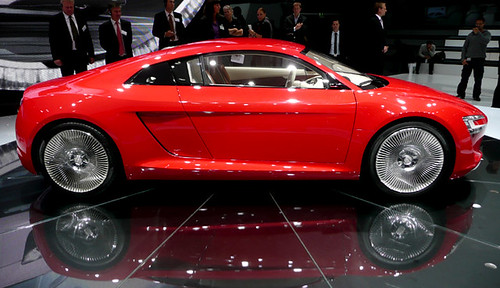
The e-tron study is a two-seater coupe made out of lightweight aluminium and carbonfibre, and powered by a lithium ion battery positioned at the front to achieve a 58% rear weight distribution with the four electric motors housed at the four corners of the car. The sports car promises sports car power – 313bhp and torque is 3319lb ft – reaching 62mph in just 4.8 seconds and able to speed up to 154mph.Working with the R8, the design team lead by Stefan Sielaff, set out to explore how to transform the sports car into an electric car. ‘You cannot just take a car like the R8 and simply replace the engine with an electric one,’ he says. ‘We started to test to see what could be the language, the formal repertoire, for our future electric car.’The e-tron maintains certain Audi generic codes, but adds to this an extra dose of form follows function. For instance Sielaff and his team created cooling systems, much like a household radiator, which when needed act like fans directing the extra heat created by the battery. Weight has been shed wherever possible. The thin seats are made of magnesium and the slim dashboard houses only the most essential information.
The company doesn’t believe you can design green cars from a rational point of view. ‘It has to be emotional,’ says Sielaff. He makes a comparison to food. ‘No one wanted to eat Soya products 10 or 20 years ago. But now healthy products on the whole have been made desirable. You need to make green cars delicious in the same way.'
2.Bentley - Mulsanne

The Mulsanne is an all-new replacement of Bentley’s flagship model, the Arnage. Director of styling Dirk van Braeckel and his team worked closely with existing Arnage customers throughout the design process. As Van Braeckel explains, ‘they were very concerned about the car being recognisable as the new top model and not be mistaken for a [Bentley] Continental.
The first step was to come up with a different 'face'. Round headlamps have featured prominently in Bentley's history, but the design team updated the look with the addition of secondary lamps, creating a front end that is classically handsome but has a modern twist. The bespoke limousine follows the classic four-door saloon format, with a swooping rear end and strong muscular shoulders accentuated towards the back. Typical of a Bentley there is a short front overhang, large wheels and a generous distance between front axle and A-pillar.
Inside, craftsmanship is very much in evidence. It's also a place to retreat from the public eye. ‘When you step into the back of the car you sit behind the door opening line and behind the pillar edge so you have a lot of privacy,’ says van Braeckel. This helps the cabin seem compact from the exterior.
The car is largely hand built: it takes 420 hours to build one Mulsanne, 170 hours of which is spent on the interior alone. Laying out all the veneer for the wood trim takes two weeks. ‘Everything is hand made which opens up so many possibilities for design. On the body the only shut lines we have are on the bonnet. The doors and the boot everything else is integrated. It is like one big sculpture.’
The Mulsanne will be driven by an upgraded version of the Arnage's 6.75-litre V8 driving the rear wheels.
Sales start in 2010. Price: To be confirmed
www.bentleymotors.com
3.Aston Martin Rapide
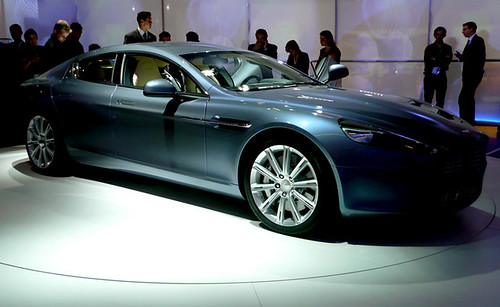
The Rapide has four doors, four adult seats and is the longest car – 5,019mm - in the Aston Martin portfolio. First shown as a design study back at the 2006 Detroit Show, the production car is powered by the marque’s 470bhp V12 engine. Design director Marek Reichman believes the extra length has helped make the car seem more elegant. He explains: ‘it is very difficult to create tension in a shorter car. I think the balance is not to overly stretch it, as it still needs to look compact. This is essentially a small car.’
The Rapide has a low roofline which is very much part of the Aston Martin design language. It features ‘swan wing’ doors that open up and out at an angle to avoid scratching and for easier access.
The cabin is driver-focused but there are some novel ideas practiced at the rear, including openings in the front driver/passenger headrests designed to allow light to peep through giving the impression of extra space.
Reichman describes the Rapide as a long distance runner, a car that is agile in appearance. ‘Agility is about compactness and shrink-wrapping the exterior around its chassis and its architecture, then shrink-wrapping the interior too to maximise space.’
The Rapide will be built in Graz, Austria with first customer deliveries expected in early 2010.
Price: circa £150,000
www.astonmartin.com
4.Audi R8 Spyder

The R8 Spyder is the new soft-top in the range. The mid-engine car sports car follows the same design theme as the R8 Coupe with some styling modifications to accommodate the folding fabric roof. For instance, the car's trademark side blades have been dispatched in favour of a duo of scoops ahead of the rear wheels, and a little height has been added to the rear deck in order to house the folded roof. And the engine is no longer exposed beneath a glass cover, as in the coupe.%A%A‘The soft-top evokes a certain romanticism of driving,’ notes head of Audi design Stefan Sielaff. Audi hasn't yet ventured into the world of the retractable hardtop, unlike Mercedes and BMW, preferring the space and weight-saving qualities of folding fabric. Additionally, with textile you can play with the roof colour without making too much of a statement.
The R8 Spyder is offered only with the Lamborghini-derived 5.2-liter V10, putting out 525 hp and 390 lb ft of torque.
On sale: early 2010, Price: circa £112,000
www.audi.com
5.BMW Vision Efficient
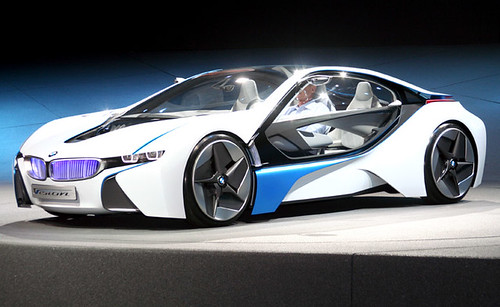
AVision Efficient Dynamics is a showcase for BMW’s latest technology - with lightweight body construction, new architecture and aerodynamic ideas, as well as an advanced hybrid-drive system. Many of these technologies are finding their way into the company's production cars and this concept car is also a test bed for BMW’s future design language.
Styled under the direction of Adrian van Hooydonk, the large expanses of glass on the body express visual lightness.
The diesel-electric hybrid system – it can run on electric power, diesel or a combination - powering the car offers 163bhp and 214lbft of torque, which makes it more powerful than BMW’s existing low consumption engines. Any car inspired by the VED would be light years ahead of the competition in terms of style and technology, and its positive reception made a production version a tempting prospect.
www.bmw.com
6.Ferrari 458 Italia
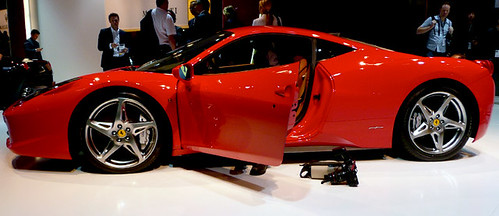
The 458 Italia takes inspiration from Mille Chili concept car of 2007, designed to introduce some green thinking ideas to the marque. Lightweight and elegant (the name derives from the 4.5-litre V8 engine), the 458 is perhaps the most visually dramatic car to wear the Ferrari badge for a decade.
Customer deliveries will start in 2010. Price: circa £150,000
www.ferrari.com
7.Lamborghini Reventon roadster
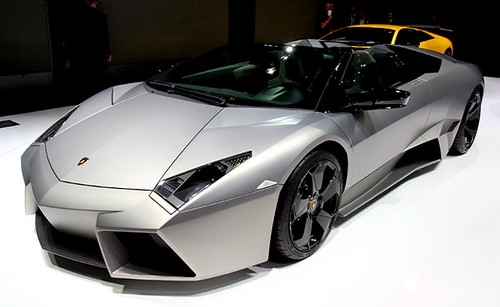
This drop top follows up to the strictly limited edition Reventon Coupe shown at the 2007 Frankfurt Show. It is also one of the fastest (0-62mph in just 3.4 seconds), and most exclusive cars on the road, with a projected production run of just 20.
Price: circa £1m
www.lamborghini.com
8.Maserati - GranCabrio

The GranCabrio is the open-top sibling of the GranTurismo,. Powered by the firm’s 4.7 litre V8, 323 kW engine, this is the marque’s first venture into the four-seat cabriolet market. One of the best-looking cars at the show, the successful design largely makes up for the car's long and convoluted development.
Our main guideline was to keep the beauty we had on the coupe but avoid losing power by converting it into cabriolet,’ explains Lowie Vermeersch, director of design at Pininfarina and the man responsible for designing both GranCabrio and GranTurismo. His team achieved their goal by creating a very sleek roof and profile. ‘It was a big engineering job to realise the roof shape,' he admits.
Vermeersch explains that with Maserati, all design starts from the grille, with the aim of creating one single uninterrupted surface that spreads right over the car. Graphics wise, the designers have added an almost jewel-like red line around the lights - a small detail, but one that picks out the neat rear end.
The GranTurismo and now GranCabrio are strong statements for Maserati. Vermeersch believes they are a good example of how you can push a marque forward without interrupting the heritage. ‘The car has a very strong expression - It is an extrovert car and won’t leave you indifferent,’ says Vermeersch. ‘These are high performance cars and the styling has to express this.’
UK sales: March 2010. Price: circa £100,000
www.maserati.com
9.Mazda Superlight concept

The Superlight concept is a nimble 1,000kg two-seater sports car, built to celebrate 20 years of the iconic MX-5 roadster, as well as showcase how higher performance and low consumption can be achieved through simple measures in weight reduction.
Designed at the European studio in Germany, the team led by Peter Birtwhistle, stripped the third generation MX5 body and interior of everything that didn’t impact on the driveability – including the windscreen - to achieve the dramatic reduction in weight.
‘This is a bit of a fantasy car,’ admits Birtwhistle. ‘Someone could almost built this themselves, have in their garage and when the sun comes out take it out for a ride.’ With the absence of a windscreen, the aluminium bonnet has been extended towards the cabin with a sheet of carbonfibre that forms the single rear-view mirror and curls around the instrument cluster.
Mazda’s philosophy is to take more weight out of its future cars and many of the features including the lightweight carbonfibre slim bucket seats will find their way through to the production cars. ‘Cars just got too fat, heavy and inefficient,’ says the designer. ‘Maybe some of the visual appeal based on weight reduction will return.’
www.mazda.com
10.Mercedes-Benz SLS-AMG
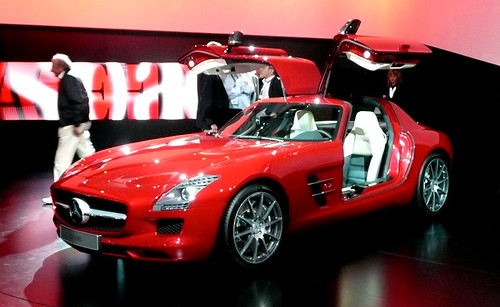
The SLS-AMG is a lightweight aluminium structure; high-performance car that nods to the 1954 300SL with its roof hinged gullwing doors. Mercedes-Benz will offer a four-wheel drive electric version of the car in the near future.
Price: from approx £140,000%
www.mbusa.com
11.Mini Roadster and Coupe
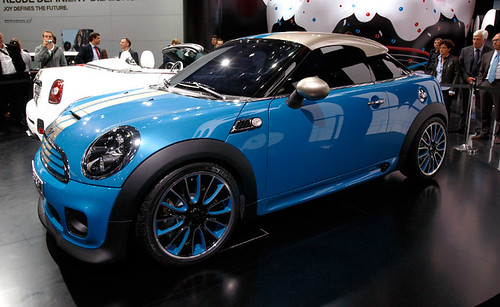
The two-seater Roadster is the second of Mini’s new models. The concept car shares much of the design cues we see in the Mini Coupe. The glasshouse is significantly lower, which added to the sloping front pillars, gives the car a sportier look. This is an expensive feature to re-engineer, so it is not known if it will feature in a production version of the car.
www.mini.com
12.Porsche 911-Turbo
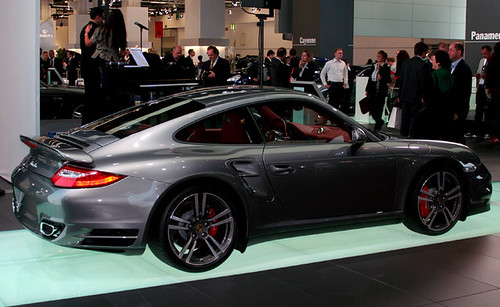
Porsche continue to hone their icon, and the latest iteration of the 911 continues the company's long tradition of continuous improvement. The company also launched the Sport Classic, a retro-infused, track-targeted version of the 911 with old school styling details and a strictly limited production run.
Price: Coupe circa £102,000 and the cabriolet circa £109,000
www.porsche.com
13.Rolls-Royce - Ghost
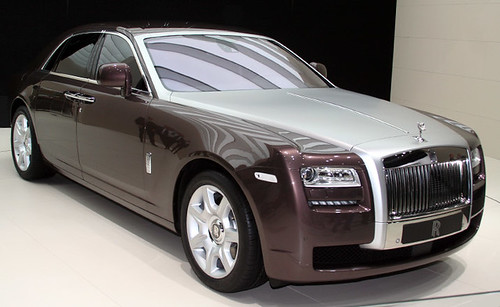
The Ghost is a more ‘informal’ Rolls-Royce, designed to broaden the appeal of the marque. The production car follows the same design language as the 200EX concept, first shown at the Geneva show. Incorporating classic Rolls-Royce design cues - the elevated prow, long bonnet, short front overhang, sharply raked A-pillar and elegant tail - it's relatively small compared to the flagship Phantom.
The style and verve of Cary Grant was apparently a key inspiration behind the car. ‘He is something of a benchmark!’ reflects project leader interior design, Alan Sheppard. This is intended as a modern interpretation of the Rolls-Royce spirit: the idea being to create something a little less formal than the Phantom. ‘The Ghost is therefore bit more casual, a little bit more free spirited, a little more jolly,’ says Sheppard.
The upward-sweeping sill line and low-cut roof create a powerful profile, almost as though the cabin has been pushed toward the rear. Inside features a mix of traditional and modern materials such as full grain leather on the seats, optional lambs wool floor mats and a new cashmere blend on the headlining. The team have added a little more 'jewellery' inside, car design shorthand for intriguing splashes of chrome and switchgear. Shephard explains: ‘The way the jewellery is used, it emphasises the graphic elements in the car and makes it more playful.’ He feels there is always a hint of Art Deco in his cars, manifested in the interplay between natural and machine surfaces.
Unlike the Phantom, The Ghost is less likely to be chauffeur driven so the interior is more driver-focused than previous Rolls-Royces. Nonetheless, the interior designer is keen to stress that there are no ‘second class’ seats in a Rolls-Royce. ‘Everyone in the Ghost has an equal amount of things to fascinate them so you don’t feel relegated to the back seat like many other cars.’
The Ghost is powered by the marque’s new, 6.6 litre twin-turbo V12 engine reaching 60mph in just 4.7 seconds and on to an electronically governed top speed of 155mph.
.Price: £192,500
www.rolls-roycemotorcars.com
News source:
http://www.wallpaper.com/cars/frankfurt-motor-show-2009-/3752









0 意見:
張貼留言